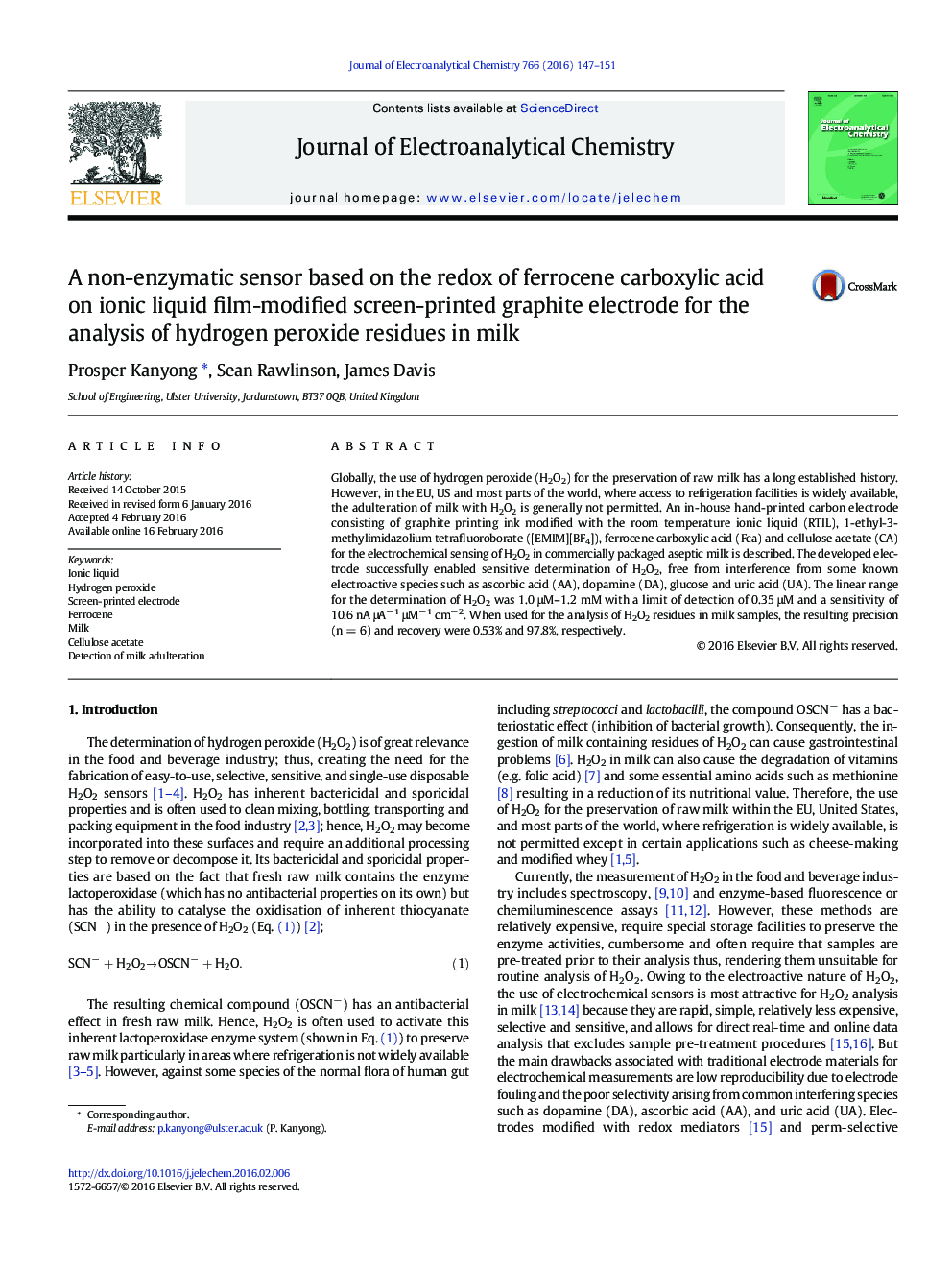| Article ID | Journal | Published Year | Pages | File Type |
|---|---|---|---|---|
| 218021 | Journal of Electroanalytical Chemistry | 2016 | 5 Pages |
Globally, the use of hydrogen peroxide (H2O2) for the preservation of raw milk has a long established history. However, in the EU, US and most parts of the world, where access to refrigeration facilities is widely available, the adulteration of milk with H2O2 is generally not permitted. An in-house hand-printed carbon electrode consisting of graphite printing ink modified with the room temperature ionic liquid (RTIL), 1-ethyl-3-methylimidazolium tetrafluoroborate ([EMIM][BF4]), ferrocene carboxylic acid (Fca) and cellulose acetate (CA) for the electrochemical sensing of H2O2 in commercially packaged aseptic milk is described. The developed electrode successfully enabled sensitive determination of H2O2, free from interference from some known electroactive species such as ascorbic acid (AA), dopamine (DA), glucose and uric acid (UA). The linear range for the determination of H2O2 was 1.0 μM–1.2 mM with a limit of detection of 0.35 μM and a sensitivity of 10.6 nA μA− 1 μM− 1 cm− 2. When used for the analysis of H2O2 residues in milk samples, the resulting precision (n = 6) and recovery were 0.53% and 97.8%, respectively.
